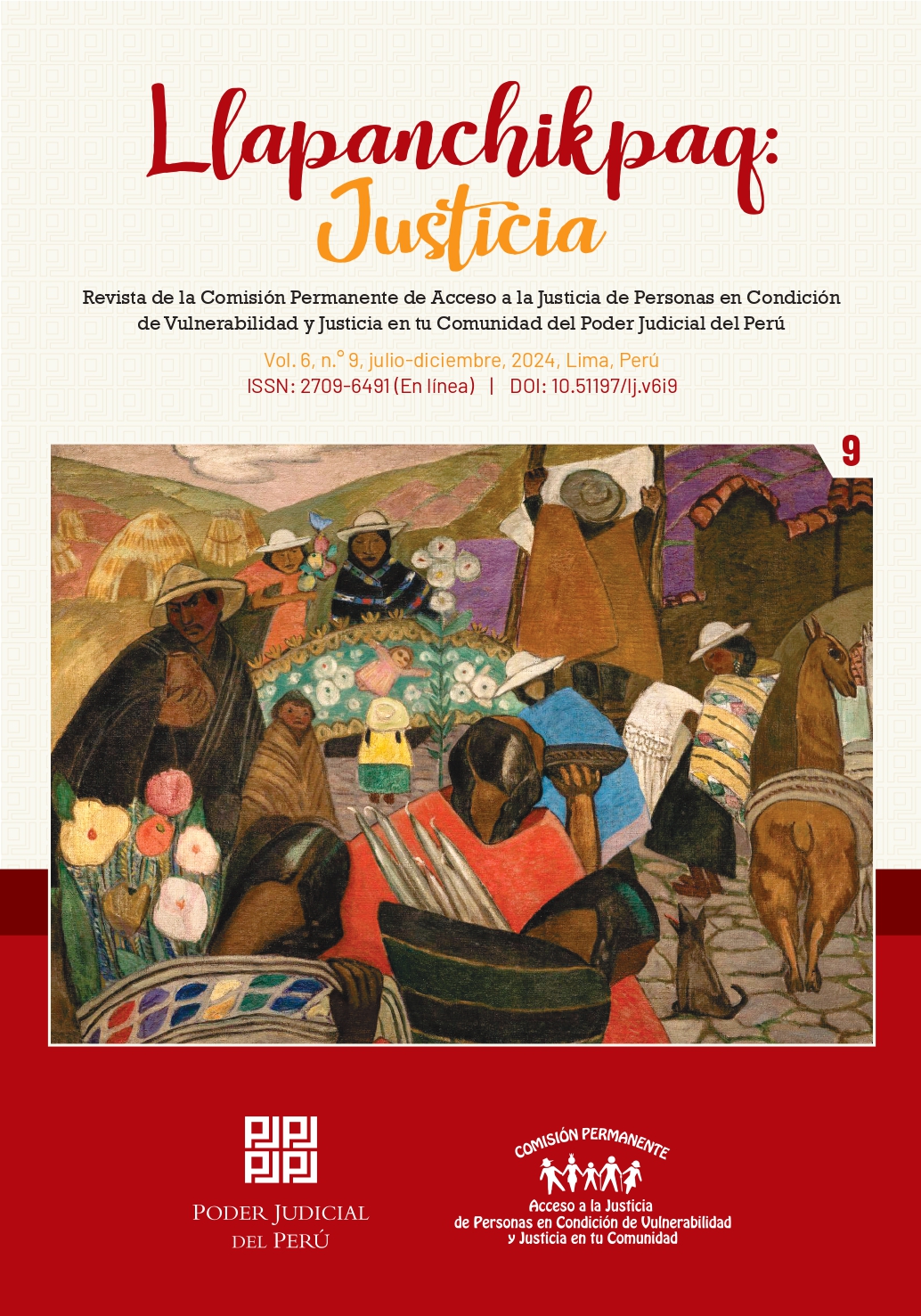Derecho penal y protección de datos personales
Resumo
Artigo analisa os antecedentes regulatórios dos dados pessoais no sistema jurídico panamenho; é realizado um estudo legislativo comparativo sobre o tema dos direitos digitais na América Latina, bem como o problema da violência digital, os delitos penais e tudo o que se relaciona com o direito de acesso à justiça nessa área. Como contribuição, o trabalho examina as raízes sociais do problema e propõe uma explicação contemporânea e clara e uma abordagem prática para a aplicação dos direitos dos indivíduos que possuem dados pessoais e sensíveis. Da mesma forma, são feitas definições conceituais para identificar os elementos que constroem o vínculo entre direitos inalienáveis, novas tecnologias e justiça penal, e são apresentadas as diferentes correntes jurisprudenciais no Panamá em relação ao direito penal e à proteção de dados pessoais.
Downloads
Metrics
Referências
Autoridad Nacional de Transparencia y Acceso a la Información de Panamá (ANTAI). (n. d.). Página principal. ANTAI. https://www.antai.gob.pa/
Autoridad Nacional de Transparencia y Acceso a la Información de Panamá (ANTAI). (n. d.). Dirección de Protección de Datos Personales. ANTAI. https://www.antai.gob.pa/direcciondeprotecciondedatospersonales/
Autoridad Nacional de Transparencia y Acceso a la Información de Panamá (ANTAI). (n. d.).Guía de Protección de Datos Personales. ANTAI. https://www.antai.gob.pa/guiadeprotecciondedatospersonales/
Autoridad Nacional de Transparencia y Acceso a la Información de Panamá (ANTAI). (n. d.).Guía para el tratamiento de datos personales, denuncia en caso de violencia de género en Internet. ANTAI. https://www.antai.gob.pa/wpcontent/uploads/2023/06/GUIA2PARAELTRATAMIENTODEDATOSPERSONALESDENUNCIAENCASO.pdf
Benavente Chorres, H. (2012). El juez de control como garante de la convencionalidad de las normas en el nuevo proceso penal mexicano. Estudios constitucionales,10(1), 145200. https://www.redalyc.org/articulo.oa?id=82024258005
Ferrajoli, L. (2012). El constitucionalismo entre principios y reglas.Biblioteca Virtual Miguel de Cervantes. https://www.cervantesvirtual.com/obra/elconstitucionalismoentreprincipiosyreglas/2015
Fœssel, M. y Garapon, A. (2006). Biometría. Las nuevas formas de la identidad. Esprit.
Gaceta Oficial Digital n.o 28743A. (2019). Ley n.o 81 (26 de marzo de 2019) Sobre protección de datos personales. https://www.gacetaoficial.gob.pa/pdfTemp/28743_A/GacetaNo_28743a_ 20190329.pdf
Gaceta Oficial Digital n.o 29296A. (2021). Decreto Ejecutivo 285 del 28 de mayo de 2021 Reglamentación de Ley n.o 81 de Protección de Datos Personales. https://www.antai.gob.pa/wpcontent/plugins/downloadattachments/includes/download.php?id=18076
Gámez-Guadix, M., Almendros, C., Borrajo, E., & Calvete, E. (2015). Prevalence and association of sexting and online sexual victimization among Spanish adults. Sexuality Research and Social Policy, 12, 145154.
Instituto Panamericano de Derecho y Nuevas Tecnologías (IPANDETEC). (2018). Privacidad Digital en Panamá. Financiado por Google Inc. bajo el programa de Google Policy Fellowship para América Latina. https://www.ipandetec.org/wpcontent/uploads/2018/12/IPANDETECPrivacidadDigitalenPanam%C3%A1.pdf
Instituto Panamericano de Derecho y Nuevas Tecnologías (IPANDETEC). (2019). Estudio sobre Monitorio de Violencia de género en línea a candidatas de elección popular 2019 en Panamá. https://www.ipandetec.org/wpcontent/uploads/2019/12/MONITOREO_Panama2019.pdf
Kant, I. (2005). Groundwork for the Metaphysics of Morals (T. K. Abbott, Trans.). En Hutchins, R.M. (ed.). Great Books of the Western World42, 253338. Encyclopædia Britannica (Original Work Published 1785).
Ley n.o 82 (2013). Que tipifica el delito de violencia contra la mujer y establece medidas de prevención, protección y atención integral a las víctimas, y reforma artículos del Código Judicial, del Código Penal y dicta otras disposiciones. https://oig.cepal.org/sites/default/files/2013_pan_ley82.pdf
Ministerio Público de la República de Panamá (2016). Texto Único del Código Penal de la República de Panamá. https://ministeriopublico.gob.pa/wpcontent/uploads/2016/09/codigopenal2016.pdf
Naciones Unidas (1948). Declaración Universal de los Derechos humanos. La Convención Internacional de los Derechos del Niño. Naciones Unidas. Declaración sobre la Protección de todas las personas contra la tortura. https://www.ohchr.org/es/instrumentsmechanisms/instruments/declarationprotectionallpersonsbeingsubjectedtortureand
Naciones Unidas (1991). Corte Interamericana de Derechos Humanos. San José.
República de Panamá (2017). Decreto Ejecutivo n.o 100 de 20 de abril de 2017. Que reglamenta la Ley n.o 82 de 24 de octubre de 2013, que adopta medidas de prevención contra la violencia en las mujeres y reforma el Código Penal para tipificar el femicidio y sancionar los hechos de violencia contra la mujer. https://www.defensoria.gob.pa/wpcontent/uploads/DecretoEjecutivoNo.100de20deabril2017.pdf
Thompson, I. (2008). Definición de información. http://www.promonegocios.net/mercadotecnia/definicioninformacion.html
Unión Europea (2021). Reglamento (UE) 2016/679 del Parlamento Europeo y del Consejo de 27 de abril de 2016 relativo a la protección de las personas físicas en lo que respecta al tratamiento de datos personales ya la libre circulación de estos datos y por el que se deroga la Directiva 95/46/CE (Reglamento general de protección de datos) (Texto pertinente a efectos del EEE). https://www.boe.es/buscar/doc.php?id=DOUEL201680807
Copyright (c) 2024 Zuleymi Velasco Pérez

This work is licensed under a Creative Commons Attribution 4.0 International License.
Os autores mantêm seus direitos autorais e se registram sob a licença Creative Commons Attribution 4.0 International License (CC BY 4.0), que permite o uso do material publicado (adaptar - remixar, transformar e construir sobre - e compartilhar - copiar e redistribuir - o material em qualquer meio ou formato).
a. A revista permite que os autores mantenham os direitos de autor dos artigos submetidos sem quaisquer restrições.
b. Os autores mantêm o direito de partilhar, distribuir, copiar, executar e comunicar publicamente o artigo publicado na Llapanchipaq Justicia (por exemplo, colocá-lo num repositório institucional).
c. Os autores conservam o direito de publicar posteriormente o seu trabalho, de utilizar o artigo ou qualquer parte do mesmo (por exemplo, uma compilação do seu trabalho, notas para conferências, teses ou para um livro), desde que indiquem a fonte de publicação (autores do trabalho, revista, volume, número e data).
















